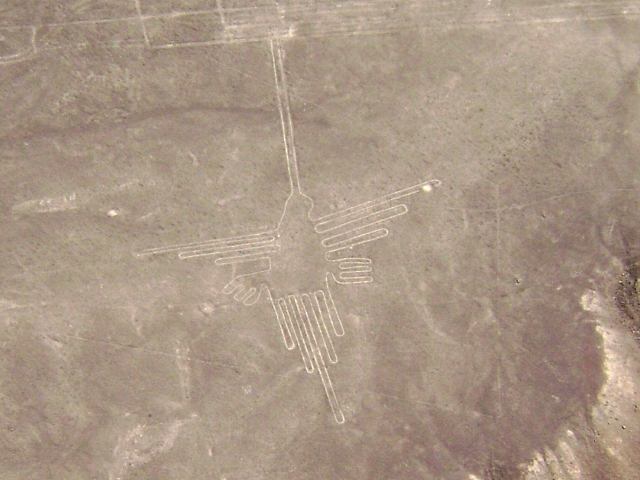
Researchers studying the morphological traits of the birds of Peru’s famous Nazca Lines have made an interesting revelation regarding the animals depicted by the massive earthworks: none of them are native to the Nazca region, but instead represent coastal creatures, rather than an aviary that would be found on the high Peruvian plateau.
The Nazca Lines are sprawling earthworks made by an unknown group of pre-Incan people that removed the dark topsoil on the Nazca Plateau to reveal the light-colored sand underneath, in the process creating pictures of geometric figures, human-like characters, along with plant and animal designs, with most of the artwork being large enough to only be seen in their entirety from the air. Amongst the animal designs, the largest group represented are birds—16 in total—and were the focus of this study conducted by Japanese researchers.
The team examined the morphological traits of the earthen birds, including their beaks, necks, wings and tails; these traits were then compared to more than 2,000 scientific drawings of Peruvian birds, in an attempt to identify which species the Lines’ creators had in mind when they were designing the giant images.
The analysis allowed the team to classify the birds into three groups: pelicans, parrots , and a bird called a “hermit”. Hermits, a type of hummingbird—indeed, the 93-meter (305-foot) Nazca earthwork depicting the creature is commonly called “The Hummingbird”—are not found in the arid Nazca Desert, but rather consist of two species, Koepecke’s hermit and the Reddish hermit, found in the lower-lying jungles around the Nazca Plateau. In fact, all of the birds depicted by the Nazca Lines are not found in the region: parrots, like their sacred hermit counterparts, are endemic to the jungle, and pelicans are a coastal bird, an even more distant inspiration for the Lines’ creators.
According to the study’s text, the researchers believe that the reason “exotic birds were depicted in the geoglyphs instead of indigenous birds is closely related to the purpose of the etching process,” meaning that it’s possible that instead of performing just an astronomical function, the tropical birds may also have been navigational aids, a permanent signpost leading the way to lands with more abundant food and water.
Subscribers, to watch the subscriber version of the video, first log in then click on Dreamland Subscriber-Only Video Podcast link.
The first thing I think of when I look at that hummingbird is “That must be very important” not this must be pointing the way to something.
All I can say is ‘duh’…It took this how long to be discovered?
Some of this is pretty obvious, even for non-scientists…
The hummingbird is the heavenly messenger to the Inca. Within their shamanic traditions is an exercise that allows one to grow a flower within oneself and when the nectar is ready, the hummingbird will come to you to drink. Therein lies the connection of the hummingbird, the human and the divine.
It’s worth noting that the Aztecs believed the hummingbird to be the reincarnation of dead warriors. Huitzilopochtli was worshiped as the sun deity and sacrifices were made to ensure the Aztecs didn’t fall to eternal night.
Who are the researchers, and thank you, DARAUG, for illustrating my point! Many of us no know and are aware of the very connections mentioned by you in regards to the hummingbird. It’s like certain disciplines (archaeology comes to mind) discount or ignore others when they come up with their ‘discoveries’. This is why knowledge that covers a wide area is often a lot more important than specialization.
It’s funny you mentioned archaeology as my background is anthropology with a concentration in archaeology! Also, being married to a physicist I’ve come to find that the vast majority of scientists aren’t so much curious as they are eager to categorize everything, they’re like cosmic neatfreaks. A PhD means you’re really good at one very narrow field and unless there’s a reason to go outside that, they stay on the safe side.
So my husband and I are kind of oddities as scientists; we’re both comfortable saying I don’t know, both shaman, both seen ufos and light beings and just want to experience more.
Keep being”oddities”!
That’s why I didn’t get too deeply into Mesoamerican lore surrounding the hummingbird (or in this case, the hermit) when writing this piece, since most (if not all) of those that frequent Unknown Country will already be familiar with it.
That, and I try to keep from letting the articles run on for too long…